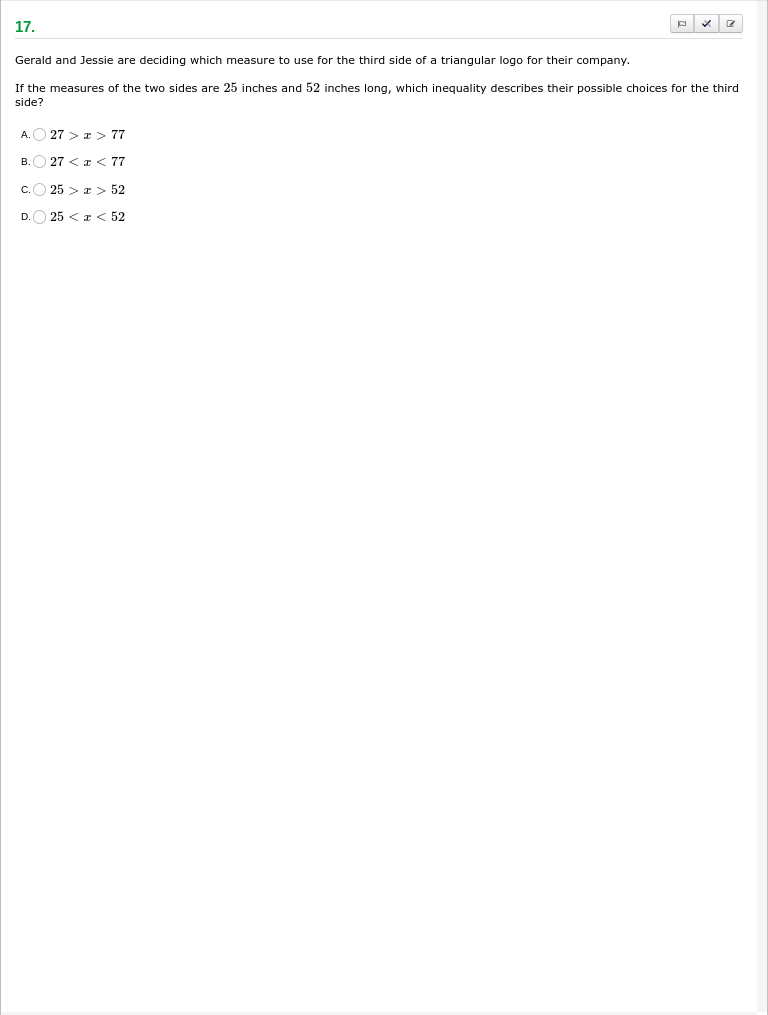If the measures of the two sides are 25 inches and 52 inches long, which inequality describes their possible choices for the third side?

Understand the Problem
The question is asking for the inequalities that describe the possible lengths of the third side of a triangle given the lengths of the other two sides, which are 25 inches and 52 inches. According to the triangle inequality theorem, the sum of the lengths of any two sides of a triangle must be greater than the length of the third side, leading to the formulation of two inequalities based on the provided lengths.
Answer
The inequality for the third side is $27 < x < 77$.
Answer for screen readers
The correct inequality describing the possible choices for the third side is:
$$ 27 < x < 77 $$.
Steps to Solve
-
Apply the Triangle Inequality Theorem
According to the triangle inequality theorem, the sum of the lengths of any two sides of a triangle must be greater than the length of the third side. For sides of lengths 25 and 52, the inequalities can be set up as follows. -
Set Up the First Inequality
The first inequality states that the sum of the two sides must be greater than the third side, denoted as $x$. Thus, we have:
$$ 25 + 52 > x $$
This simplifies to:
$$ 77 > x $$, or equivalently, $x < 77$. -
Set Up the Second Inequality
The next inequality states that the difference between the two sides must be less than the third side. This gives us:
$$ 52 - 25 < x $$
This simplifies to:
$$ 27 < x $$. -
Combine the Inequalities
Combining both inequalities, we have:
$$ 27 < x < 77 $$.
The correct inequality describing the possible choices for the third side is:
$$ 27 < x < 77 $$.
More Information
This answer reflects the conditions necessary for forming a triangle, ensuring that the lengths satisfy both the upper and lower limits derived from the triangle inequality theorem. The inequality indicates that the third side must be greater than 27 inches and less than 77 inches.
Tips
- Confusing the sum and difference inequalities: It’s important to remember that the sum of two sides must exceed the third and that the third side must also be more than the difference between the two existing sides.
- Misinterpreting the inequalities: Always check to ensure the correct logical relationship is represented in the inequalities.
AI-generated content may contain errors. Please verify critical information